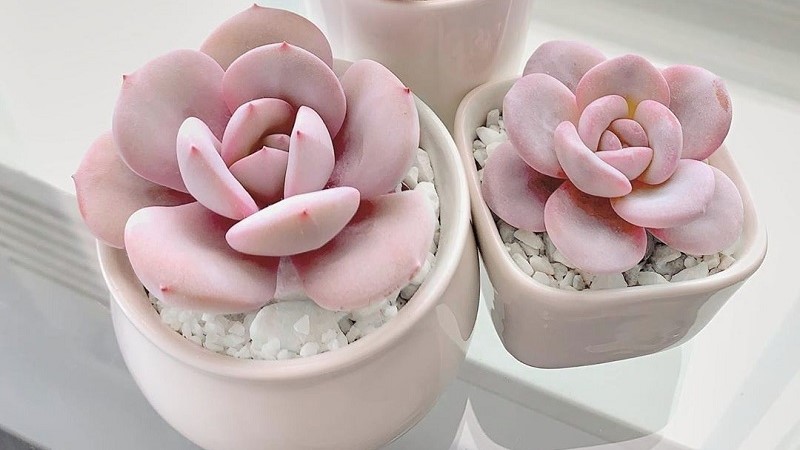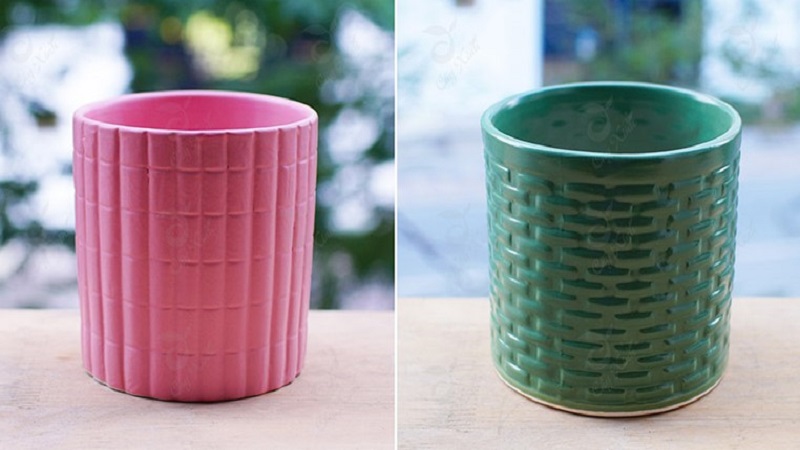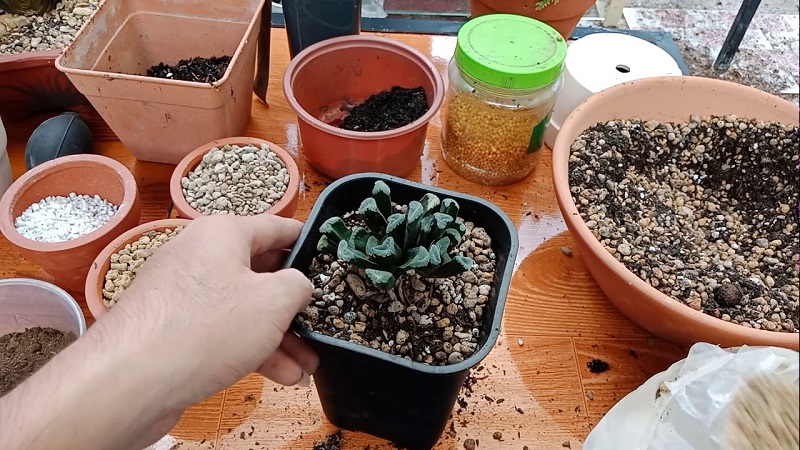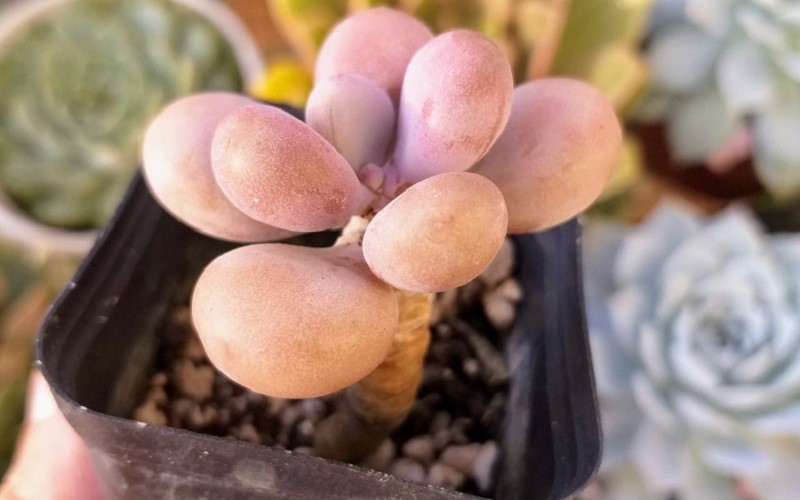If you’re a fan of houseplants, then this article is for you. Today, we’ll be covering everything you need to know about the moonstone plant, from its characteristics and symbolism to a detailed guide on how to grow and care for this beautiful plant.
1 What is the Moonstone Plant?
 Moonstone Plant with Eye-Catching Appearance
Moonstone Plant with Eye-Catching Appearance
The moonstone plant, also known as Pachyphytum oviferum, is a member of the Echeveria genus within the Pachyphytum family, which is native to Northwestern North America and Mexico. With its plump leaves and round, smooth-edged heads, this plant resembles tiny pebbles, and its leaves are often coated in a powdery white substance, giving them a pinkish hue.
The moonstone plant’s flowering season is from April to June, during which its flower stalks emerge from the leaf rosette, resembling tiny parasols.
Its captivating and adorable appearance has made the moonstone plant a popular choice for decorating desks, study tables, bedrooms, balconies, homes, cafes, and hotels. In addition to its aesthetic appeal, the moonstone plant is an effective air purifier, creating a refreshing atmosphere in any space.
2 Symbolism of the Moonstone Plant
 Moonstone Plant holds positive symbolism in Feng Shui
Moonstone Plant holds positive symbolism in Feng Shui
The moonstone plant symbolizes everlasting life, enduring love, and noble friendship. In the context of Feng Shui, this plant is believed to attract luck, prosperity, and wealth to its owner. Thus, it makes an excellent and meaningful gift for friends and loved ones.
3 How to Grow the Moonstone Plant
 Guide to Growing the Moonstone Plant
Guide to Growing the Moonstone Plant
Materials Needed
- Plant pot with good drainage holes
- Well-draining soil
- Moonstone plant seedling
Step-by-Step Guide to Growing the Moonstone Plant
 Moonstone plants thrive in clay pots
Moonstone plants thrive in clay pots
Select a pot with efficient drainage holes, as moonstone plants thrive in environments with minimal water and cannot tolerate waterlogging. Therefore, when planting your moonstone, opt for a clay pot with adequate drainage holes.
 Mixing soil for the moonstone plant
Mixing soil for the moonstone plant
Choose a well-aerated, fast-draining soil mix, as most Echeveria species, including the moonstone plant, cannot tolerate waterlogged soil for extended periods.
You can create your own soil mix by combining sand, gravel, and loamy soil with a small amount of organic fertilizer. Alternatively, a mixture of sand, ash, and organic fertilizer also works well for moonstone plants.
 Planting the moonstone seedling
Planting the moonstone seedling
Once you have prepared your soil mix, fill your chosen pot to about ⅔ with the soil. Then, gently place the moonstone plant seedling into the pot.
Using one hand to stabilize the plant, use your other hand to add more soil to the pot until it is full. Finally, gently press down on the soil with your fingers to compact it and secure the plant’s roots.
4 Caring for Your Moonstone Plant
Caring for a moonstone plant is relatively low-maintenance and straightforward. However, to ensure its healthy growth and vibrant color, keep the following factors in mind:
Light
Moonstone plants thrive in bright, sunny conditions, so make sure they receive ample sunlight. Place your plant in a well-lit area, but avoid direct exposure to intense sunlight to prevent leaf scorching. If your plant is kept indoors, consider taking it outside to soak up some sun once or twice a week.
Watering
Moonstone plants are drought-tolerant and do not require frequent watering. Water your plant once or twice a week, and reduce watering to once every three weeks during the winter months.
When watering, focus on the base of the plant, avoiding wetting the leaves to prevent leaf rot. Water your plant in the morning or evening to avoid heat stress.
 Proper care ensures the moonstone plant’s beauty and health
Proper care ensures the moonstone plant’s beauty and health
Soil
To ensure optimal drainage and aeration, enhance your soil mix with coconut coir, coal slag, rice husks, or ash. Additionally, incorporate a small amount of organic fertilizer to provide your plant with essential nutrients for robust growth.
Disease Prevention
Moonstone plants are susceptible to leaf spot disease and mealybugs. If your plant shows signs of these issues, don’t panic. Simply purchase appropriate treatments from a garden supply store and spray your plant as directed.
This article has provided a comprehensive guide to the moonstone plant, including its characteristics, symbolism, and detailed instructions on how to grow and care for it. If you’re intrigued by this captivating plant, why not give it a try and experience the joy of nurturing your very own moonstone plant?



































